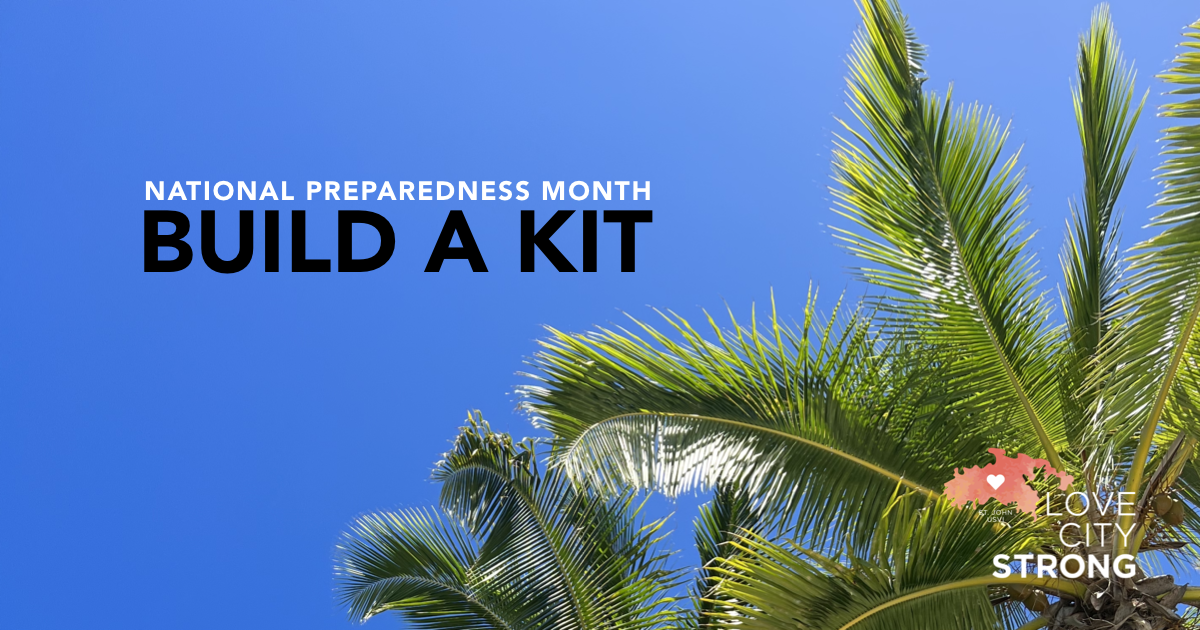
Build a Kit

National Preparedness Month is in full swing! This year’s theme is “A Lasting Legacy: The life you’ve built is worth protecting.” Therefore, throughout September we are sharing tips and best practices related to different aspects of preparedness. Preparing for disasters will help create a lasting legacy for you and your family.
This week’s topic is: Build a Kit.
An emergency kit should include everything that you and your household would need to survive after a disaster. Remember, you may be without electricity, without essential services, and without access to your home for a minimum of seven days.
Non-perishable food, water, medications, first aid supplies, alternative power sources, and copies of your important personal documents are just a few of the essential components that make up a strong emergency kit. You can visit Ready.gov for a comprehensive list of items to keep in your kit.
Every emergency kit is unique. Include the basics needed for survival, as well as items that will make you and your family feel safe and comfortable, both during and after a disaster. This could include toys, a favorite book, a deck of cards, stuffed animals, or a sketchbook or journal. Make sure to include back up glasses or contact lenses, extra batteries for hearing aids, and other items you may need if you’re away from home for an extended period of time.
With COVID-19 still impacting communities around the world, it’s also a good idea to include some extra masks, a digital thermometer, hand sanitizer, and surface cleaning supplies, to help keep your family safe and healthy.
If you have pets, they should have their own emergency kit! Visit the Humane Society’s pet preparedness guide for everything you need to know about creating the best kit for your pets.
It’s never too early to start preparing for a disaster. Evidence shows that those who are prepared with an emergency plan and kit prior to a disaster impact have better outcomes than those who don’t. Building your emergency kits together can help your family address anxieties and fears related to disasters, and offer children in particular a sense of control in unfamiliar circumstances. Start today – build a kit!
